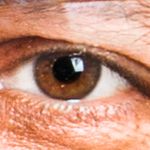 Adobe Community
Adobe Community
- Home
- Photoshop ecosystem
- Discussions
- Re: Reproducing RGB adjustment layers in CMYK
- Re: Reproducing RGB adjustment layers in CMYK
Copy link to clipboard
Copied
I have been supplied an RGB file that a client has added adjustment layers to, which control levels curves etc etc. I have to supply an editable final CMYK version of the file with adjustment layers that looks exactly the same or as near as possible.
Obviously when I try to convert his file to CMYK, Photoshop has to either apply or discard the adjustment layers, they cannot be converted.
My question is, what is the most accurate way of reproducing his RGB adjusment layers in CMYK? Do I just have to eyeball it, or try and match colours using the info panel, or is there a better method of matching the RGB adjustments?
 1 Correct answer
1 Correct answer
I would make a new CMYK document at the size and resolution you need for print, with the correct CMYK icc profile assigned for whatever the intended output is. Then I would place the RGB document into the CMYK one using the place embedded method. This will place the RGB as a smart object with the RGB content and the adjustment layers inside of the smart object. The RGB will convert to CMYK based on the assigned icc profile. You could still edit the original RGB image, and it's adjustment layers
...Explore related tutorials & articles
Copy link to clipboard
Copied
Just to make sure that I fully understand the request…
You have an RGB file with a single raster image layer and (RGB)adjustment layers. This delivers a specific “look” to the image.
Your task is to convert the RGB file to CMYK without adjustment layers. Then to add (CMYK) adjustment layers to return the look of the image to what it looked like in RGB with the RGB adjustment layers (gamut limitations permitting).
Is that right?
Copy link to clipboard
Copied
I would make a new CMYK document at the size and resolution you need for print, with the correct CMYK icc profile assigned for whatever the intended output is. Then I would place the RGB document into the CMYK one using the place embedded method. This will place the RGB as a smart object with the RGB content and the adjustment layers inside of the smart object. The RGB will convert to CMYK based on the assigned icc profile. You could still edit the original RGB image, and it's adjustment layers by double clicking on the smart object. That will open the RGB content in a separate window.
Copy link to clipboard
Copied
Do I just have to eyeball it
Most likely yes. As suggested you can of course import the RGB file as a reference, but I wouldn't rely on it. You may be able to get it to look right in the initial state, but it will bring you back to square one if the client requests any adjustments since he obviously places empahsis on having an "editable" file. Aside from the technicalities of Photoshop with many adjusmtents having inverse meaning between the different modes it will be a simple matter of giving yourself headroom with things like ink density for printing. It may also be necessary to insert additional adjustments or use completely different ones because of those differences in how they work. And of course the usual disclaimer: Some colors just won't carry over due to gamut differences and may require a completely different approach entirely.
Mylenium
Copy link to clipboard
Copied
Thanks folks. How this occurred is that I have been creating a master CMYK image for a major drinks brand, via a design agency that can be used as a 'kit' by other design agencies to create various bits of print collateral. I took the image so far, but the end client requested changes, and to save money, the agency I'm working for said "we'll do the changes" but they wanted an RGB version of the image to work on, as they seem unable or unwilling to add adjustment layers to a CMYK file. So they have made adjustments to an RGB version of the file, and now I have to reproduce those adjustments on my CMYK master. They don't actually need any adjustment layers in the final delivered file, just master smart layers they can move and scale, so Theresa's suggestion might work. Otherwise, looks like I'll have to eyeball it.
Copy link to clipboard
Copied
they wanted an RGB version of the image to work on, as they seem unable or unwilling to add adjustment layers to a CMYK file.
If the image is photographic in nature they did well to request the RGB data because working in CMYK is generally a bad idea for those kind of images.
Adjusting photographic CMYK files can easily lead to exceeding the TAC, messing up the gray balance in parts of an image, …
So they have made adjustments to an RGB version of the file, and now I have to reproduce those adjustments on my CMYK master.
Can’t you place the RGB image (or affected section of it) as a Smart Object?
Copy link to clipboard
Copied
Theresa's suggestion worked, so thanks for everyone's help.
Copy link to clipboard
Copied
Mark the answer as correct!
I would have indeed suggested to create a smart object layer from the RGB file and convert that one into CMYK. It is the only possibility to keep all the tweaks exactly as is.



